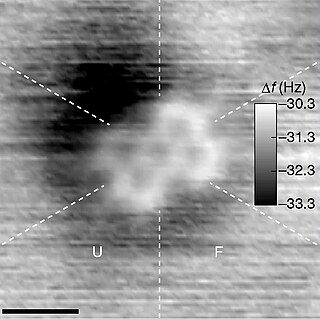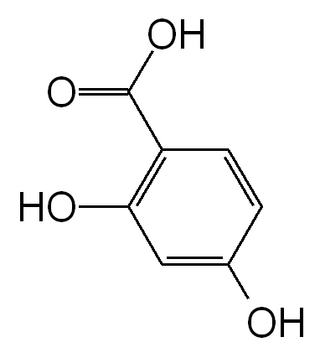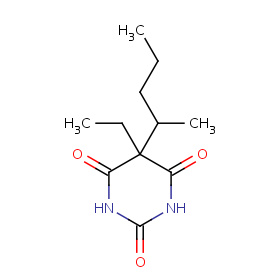The molecular formula C4H12N2 (molar mass: 88.15 g/mol) may refer to:
The molecular formula C4H12N2 (molar mass: 88.15 g/mol) may refer to:
In chemistry, a chemical formula is a way of presenting information about the chemical proportions of atoms that constitute a particular chemical compound or molecule, using chemical element symbols, numbers, and sometimes also other symbols, such as parentheses, dashes, brackets, commas and plus (+) and minus (−) signs. These are limited to a single typographic line of symbols, which may include subscripts and superscripts. A chemical formula is not a chemical name since it does not contain any words. Although a chemical formula may imply certain simple chemical structures, it is not the same as a full chemical structural formula. Chemical formulae can fully specify the structure of only the simplest of molecules and chemical substances, and are generally more limited in power than chemical names and structural formulae.

A molecule is a group of two or more atoms held together by attractive forces known as chemical bonds; depending on context, the term may or may not include ions which satisfy this criterion. In quantum physics, organic chemistry, and biochemistry, the distinction from ions is dropped and molecule is often used when referring to polyatomic ions.
Benzol may refer to:

The structural formula of a chemical compound is a graphic representation of the molecular structure, showing how the atoms are possibly arranged in the real three-dimensional space. The chemical bonding within the molecule is also shown, either explicitly or implicitly. Unlike other chemical formula types, which have a limited number of symbols and are capable of only limited descriptive power, structural formulas provide a more complete geometric representation of the molecular structure. For example, many chemical compounds exist in different isomeric forms, which have different enantiomeric structures but the same molecular formula. There are multiple types of ways to draw these structural formulas such as: Lewis structures, condensed formulas, skeletal formulas, Newman projections, Cyclohexane conformations, Haworth projections, and Fischer projections.
N8 may refer to:

Casomorphin is an opioid peptide derived from the digestion of the milk protein casein.
Dichloroethene or dichloroethylene, often abbreviated as DCE, can refer to any one of several isomeric forms of the organochloride with the molecular formula C2H2Cl2:
The molecular formula C6H12O6 (molar mass: 180.16 g/mol) may refer to:
The molecular formula C6H8O6 (molar mass: 176.124 g/mol) may be:

Dihydroxybenzoic acids (DHBA) are a type of phenolic acids.
Dioxin may refer to a number of different subtances. Most notably:
The molecular formula C19H28O3 may refer to:

The molecular formula C11H18N2O3 (molar mass: 226.27 g/mol) may be referred as:
The molecular formula C12H18BrNO2 (molar mass: 288.18 g/mol, exact mass: 287.0521 u) may refer to:
Octynes are alkynes with one triple bond and the molecular formula C8H14.
Nonynes are alkynes with one triple bond and the molecular formula C9H16.
Decynes are alkynes with one triple bond and the molecular formula C10H18.

1,2-Dimethylethylenediamine (DMEDA) is the organic compound with the formula (CH3NH)2C2H4. It is a colorless liquid with a fishy odor. It features two secondary amine functional groups.
Benzoin may refer to:
Heptynes are alkynes with one triple bond and the molecular formula C7H12.